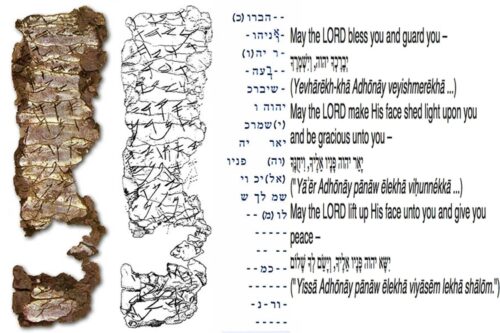Truth Vs. Lie: Does the Bible Claim the Earth Is Flat?
In recent years, there’s been a resurgence of the flat Earth theory. Some proponents even claim biblical support for their views. Critics of Christianity often use this as evidence that Scripture is scientifically inaccurate. But does the Bible claim the Earth is flat? Well, examine Scripture carefully, and a very different picture emerges…
DOES THE BIBLE CLAIM THE EARTH IS FLAT? A CLOSER LOOK
Before examining specific passages, we must understand how Scripture communicates. The Bible frequently uses phenomenological language—describing things as they appear from a human perspective. When we say “sunrise” or “sunset” today, no one accuses us of believing the sun revolves around Earth. Similarly, biblical authors wrote from an observational standpoint, not attempting to provide scientific treatises.
God inspired Scripture to communicate theological truth in language accessible to all generations, not to satisfy modern scientific curiosity. The Bible speaks truth, but we must understand what kind of truth it intends to convey in each passage.
EXAMINING THE “FLAT EARTH” PASSAGES
Critics often cite several passages as evidence for a biblical flat Earth. Let’s examine them:
- Isaiah 40:22: “He sits enthroned above the circle of the earth, and its people are like grasshoppers.” The Hebrew word for “circle” (chug) may refer to a sphere or circuit, not merely a flat disk. When Isaiah mentions the Earth’s “ends” or extremities—it may be assumed to be consistent with a globe having poles.
- Revelation 7:1: “After this I saw four angels standing at the four corners of the earth, holding back the four winds…” “Four corners” is clearly idiomatic language referring to the cardinal directions (north, south, east, west)—just as we still use this expression today without implying a literal square Earth. The passage focuses on angels positioned across the entire world, not Earth’s geometry.
- Matthew 4:8: “Again, the devil took him to a very high mountain and showed him all the kingdoms of the world and their splendour.” This wasn’t a physical observation requiring a flat Earth. Rather, it was either a supernatural vision or a representative sample of kingdoms. The focus is on the temptation, not a geography lesson.
- Job 38:13: “that it might take the earth by the edges and shake the wicked out of it?” Poetic language in Job uses vivid imagery to convey God’s power, not to teach cosmology. Context matters tremendously when interpreting ancient literature.
BIBLICAL EVIDENCE FOR A SPHERICAL EARTH
Scripture actually contains several passages that align beautifully with our modern understanding of a spherical Earth:
- Isaiah 40:22: As noted above, “circle of the earth” is compatible with sphericity.
- Job 26:7: “He spreads out the northern skies over empty space; he suspends the earth over nothing.” This remarkable passage describes Earth as suspended in space—hardly the description of a flat Earth resting on pillars or a foundation as ancient cosmologies typically taught.
- Luke 17:34-36: Jesus describes how at His return, “two people will be in one bed; one will be taken and the other left… two men will be in the field; one will be taken and the other left.” This passage, some argue, implies simultaneous day and night on Earth (one sleeping, one working)—a condition only possible on a spherical planet.
- Proverbs 8:27: “I was there when he set the heavens in place, when he marked out the horizon on the face of the deep.” The imagery of marking out a circular horizon on the deep is consistent with understanding Earth as a sphere.
Throughout history, leading Christian thinkers have also accepted Earth’s spherical nature while maintaining biblical fidelity. The supposed conflict between Christianity and a spherical Earth is simply false.
God is the author of both Scripture and nature. When properly understood, both His written Word and created world testify to the same reality. Poor biblical interpretation creates unnecessary conflicts that damage Christian witness.
CONCLUSION: DOES THE BIBLE CLAIM THE EARTH IS FLAT?
The claim that the Bible teaches a flat Earth relies on superficial readings that ignore context, literary genre, and the phenomenological language Scripture employs. When we apply sound principles of biblical interpretation, we find no contradiction between Scripture and a spherical Earth.
Christians need not fear scientific discoveries about God’s creation. Instead, we can confidently proclaim that proper understanding of both Scripture and nature reveals the harmony of divine truth. The Bible doesn’t teach pseudoscience—it reveals the Creator who designed our magnificent spherical planet suspended in space.
DOES THE BIBLE CLAIM THE EARTH IS FLAT? RELATED FAQs
If ancient Hebrews believed in a flat Earth, wouldn’t the Bible reflect this belief? The Bible was divinely inspired while accommodating human language and perspective. God allowed biblical authors to use observational language without endorsing scientific misconceptions, much like how we use terms like “sunrise” today without actually believing the sun moves around Earth. What’s remarkable is how the Bible avoids the explicit cosmological errors found in other ancient texts.
- What about the “firmament” (raqia) in Genesis 1? Doesn’t this describe a solid dome over a flat Earth? The Hebrew word “raqia” (translated as “firmament” or “expanse”) refers to an extended surface or space. While some ancient cultures did envision a solid dome, the biblical text itself doesn’t require this interpretation. Genesis simply describes God creating an atmospheric space separating waters above (clouds) from waters below, using phenomenological language accessible to all generations rather than technical scientific terminology.
- How did early Christians reconcile Scripture with Greek knowledge of a spherical Earth? Early Christian scholars like Augustine, Origen, and Basil were well-educated in Greek learning and readily accepted Earth’s sphericity while maintaining biblical fidelity. Rather than seeing contradiction, they understood biblical passages about Earth’s “corners” or “ends” as idiomatic expressions, similar to how we might use such language today. Their approach demonstrates a sophisticated understanding of different literary genres within Scripture.
- Does Ecclesiastes 1:5 (“The sun rises and the sun sets, and hurries back to where it rises”) support geocentrism? This passage uses obvious observational language describing the sun’s apparent motion as viewed from Earth, just as modern meteorologists still refer to “sunrise” and “sunset” in weather reports. Ecclesiastes, as wisdom literature, employs everyday experiential language to make philosophical points about life’s cycles, not to teach astronomy. Context shows the author is describing life’s repetitive patterns, not cosmic mechanics.
- How do we explain biblical references to Earth having a “foundation” if it’s suspended in space? Biblical references to Earth’s “foundations” (Psalm 104:5, Job 38:4) use metaphorical language emphasising stability and God’s sovereign design. These poetic passages communicate theological truth—that God established Earth with order and purpose—rather than attempting to describe physical support structures. This metaphorical language coexists with Job 26:7’s remarkable statement that God “suspends the earth over nothing.”
- Why do some flat-Earthers believe accepting a spherical Earth undermines biblical authority? Some flat-Earth proponents adopt an ultra-literal reading of phenomenological language while rejecting contextual interpretation principles. They fear acknowledging any accommodation to human perspective in Scripture creates a slippery slope for biblical authority. However, this approach misunderstands the Bible’s communication methods and ironically undermines Scripture by forcing it to teach things it never intended, creating unnecessary conflicts with observable reality.
Does Psalm 93:1 (“the world is established, firm and secure”) contradict the Earth’s movement? Psalm 93:1 addresses Earth’s stability within God’s created order, not its cosmic motionlessness. The Hebrew term for “established” (kun) conveys reliability and durability rather than physical immobility. This poetic declaration celebrates God’s faithful governance over creation, affirming that Earth functions reliably according to His design—whether rotating, orbiting, or moving through space. The psalm addresses theological security, not astronomical mechanics.
DOES THE BIBLE CLAIM THE EARTH IS FLAT? OUR RELATED POSTS
Editor’s Pick
The Ketef Hinnom Scrolls: An Accidental Yet Phenomenal Find
SMALLER THAN OUR PALM, OLDER THAN THE DEAD SEA SCROLLS In 1979, a bored 13-year-old volunteer at an archaeological dig [...]

Caught in Adultery: How Reliable Is the John 8 Story?
"Let him who is without sin cast the first stone." Few Bible scenes capture Jesus' wisdom and grace quite like [...]

What Did the Inscription on Jesus’ Cross Really Say?
A REFORMED RESPONSE TO CLAIMS OF GOSPEL CONTRADICTIONS Sceptics love to point out what they see as a glaring contradiction [...]

How Many Times Did the Rooster Crow at Peter’s Denial?
THE CHALLENGE When sceptics want to undermine Scripture’s reliability, they often point to Peter’s denial as Exhibit A for supposed [...]

Biblical and Systematic Theology: Why Do We Need Both?
TWO LENSES, ONE TRUTH Picture this familiar scene: A seminary student sits in the library, torn between two stacks of [...]

The Mysterious Two: Who Are the Anointed Ones in Zechariah?
Picture this: a golden lampstand blazing with light, flanked by two olive trees that pour oil directly into the lamp’s [...]

Regeneration Or Faith? Which Comes First in Salvation?
In the moment of salvation, does God regenerate our hearts first, or do we believe first? How we answer this [...]

Interracial Marriages: Does God Frown On Them?
The question hits close to home for many Christian couples and families today. As our churches become increasingly diverse, believers [...]
‘Because Angels Are Watching’: What Does 1 Corinthians 11:10 Mean?
“For this reason the woman ought to have authority on her head, because of the angels” (1 Corinthians 11:10, ESV). [...]

Why Does God Torment Saul With An Evil Spirit?
Would a holy God send an evil spirit to torment someone? This theological puzzle confronts us in the biblical account [...]







